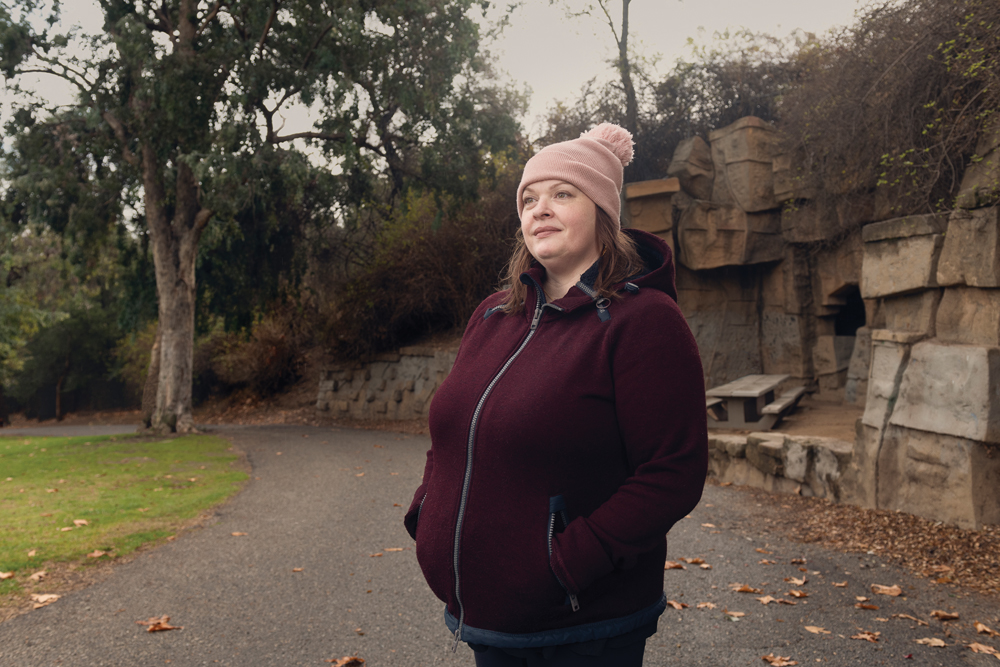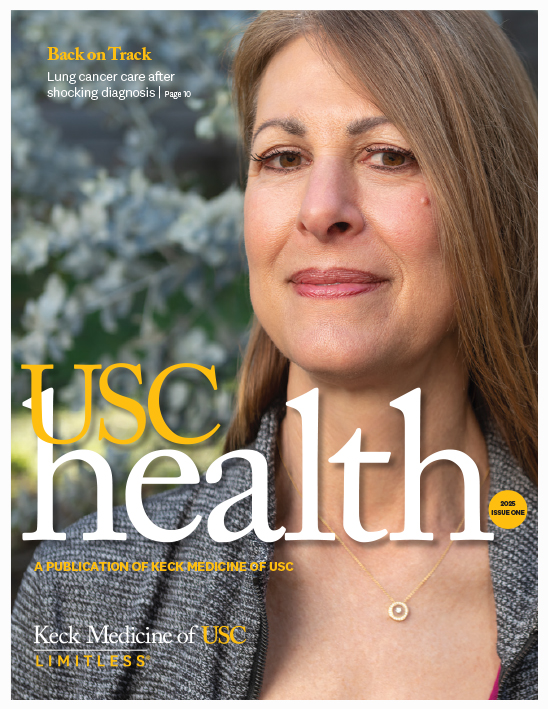
Suffering from a painful yet often misunderstood pelvic disorder, Nathreen Bonnet found healing through an advanced, highly precise surgical procedure at USC Verdugo Hills Hospital.
Though it’s common enough to affect an estimated 10% of women in the United States, endometriosis is hard to diagnose. There is no simple test.
Its most common symptom, pelvic pain, can be found in a broad range of diseases and disorders. The only way to know for sure if a woman has endometriosis is by diagnostic laparoscopic surgery.
Nathreen Bonnet began to experience pain in the mid-section of her abdomen a few years ago. Her gastroenterologist and gynecologist put her through a slew of imaging tests while trying to manage her pain with medication.
After her gynecologist discovered a cyst on one ovary and a mass in a fallopian tube, she sent Nathreen to Marcia Ciccone, MD. Dr. Ciccone specializes in gynecologic oncology at USC Verdugo Hills Hospital (USC-VHH).
Dr. Ciccone, who is also an assistant professor of clinical obstetrics and gynecology at the Keck School of Medicine of USC, notes that gynecologic patients like Nathreen are often referred to oncologists like those at USC Norris Comprehensive Cancer Center. They tend to have experience with more complex surgeries, as well as the removal of ovarian cysts.
Dr. Ciccone used a minimally invasive procedure to remove the cyst and the blocked fallopian tube from Nathreen’s body. During the procedure, she spotted the patient’s endometriosis.

What is endometriosis?
Endometriosis occurs when the type of tissue that normally lines the uterus tries to grow elsewhere.
These growths are typically found within the pelvis — including on the ovaries, fallopian tubes and the outer surface of the uterus — and can cause pain throughout the lower body.
If not treated, endometriosis can cause cysts and lead to scarring, which Dr. Ciccone says is a possible source of the blockage in the fallopian tubes. It can also lead to infertility.
“That was the first time I had ever heard of endometriosis, but the more I did research, the more things made sense,” says Nathreen.
She had had severe pain and cramping during menstruation and heavier-than-normal periods for decades. Both symptoms are commonly associated with endometriosis.
Minimally invasive surgery for endometriosis
Fortunately, treating endometriosis is beginning to emerge as a focus for some gynecologists, including Keck Medicine physician Anna Reinert, MD, an expert in minimally invasive women’s health surgery at USC-VHH.
Dr. Reinert notes that new surgical technology allows doctors to remove endometriosis throughout the pelvis and abdomen. They can also remove more of the disease through small incisions.
Dr. Reinert, an assistant professor of clinical obstetrics and gynecology at the Keck School, says endometriosis typically sits atop pelvic structures, such as an ovary.
But it can also infiltrate them, requiring more extensive surgery. When Nathreen’s pain and cysts recurred, knowing that she had endometriosis was a benefit.
“Everything is healing, and I have had no complications or problems.
Nathreen Bonnet, patient, USC Verdugo Hills Hospital
Dr. Ciccone teamed up with Dr. Reinert, and they determined that Nathreen needed another surgery. For this procedure, they used a surgical robot at USC-VHH.
Though not available at most community hospitals, robotic surgery allows surgeons to see the endometriosis more clearly. It provides the dexterity needed to remove the growths effectively.
“I think this is one of the surgeries in which the robot really shines,” Dr. Ciccone says.
Though her second surgery was more extensive than her first, Nathreen went home the same day. She felt ready to return to her yoga practice in a few days but held off for a few weeks just to be safe.
She also went to physical therapy to help with any future bouts of pelvic pain that might occur. “Everything is healing well, and I have had no complications or problems,” Nathreen says.
Topics


